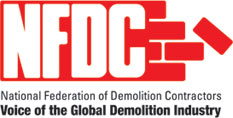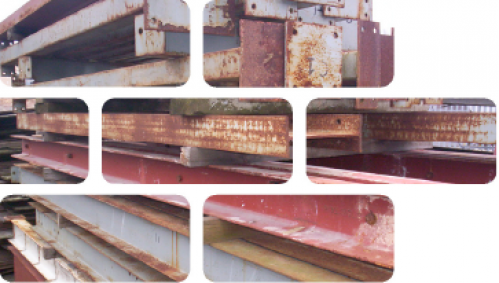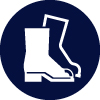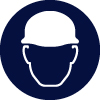
Steel Metal 17 04 05
Steel is an alloy of iron, carbon and other elements that are added for strength, lighter weight and corrosion resistance. Steel sections are produced in various styles, sizes and thicknesses, depending on the specification required. They are commonly rolled steel joists, I-beams, T-bars, H-sections, tubes, channels and mesh. They are of varying quality and finish to suit both structural and architectural finish.
Usage & Probable Locations
Steel that is used in construction is mostly for structural purposes. It is used for piles, columns, beams, floors, rafters, roof systems, stairways and reinforcement for concrete. It is also used in lintels and door frames, in the main frame, portal frames, high-rise buildings, structures and infrastructure.
Personal Protective Equipment
PPE requirements indicated are for guidance purposes only. DRIDS has identified the PPE that is mandatory on all demolition projects and ones that may be required subject to site specific Risk Assessment & Method Statement (RAMS). Hover over the icon to determine the types of PPE required for the removal of this material.
Removal, Segregation & Storage
Steel sections that are destined for reuse should be deconstructed, segregated and stored carefully and safely, to ensure their integrity and good condition. They should be stored flat on a suitably sized pallet or on timber skids, preferably with timber slats between sections to prevent warping. They should also be stored away from plant movements to prevent damage. Steel sections destined for recycling need less attention to detail and should be demolished using plant and cutting equipment and stored in metal recycling skips. There is little need to store steel sections inside a building or the need for a cover as they are robust against incremental weather.
Tools
Fixtures, Fittings & Connections
Steel sections have been traditionally fixed in place with expansion bolts, nuts & bolts, rivets and welding, but some use gravity joints or studs. Some construction elements such as lintels and wall plates often have no fixings, rather they will be built into or atop stone and brick walls using mortar. Steel sections will often be painted or galvanised for harsh environments such as farms, sewage works and on the coast. Structural elements will sometimes be coated in fire retardant paints or lined with fire resistant materials.
Health & Safety
Subject to task-specific Risk Assessment & Method Statement (RAMS). Use correct protective equipment for removing bolts and mortar. Wear gloves when handling steel sections with damaged edges, galvanised or coated in fire retardant paints to prevent irritation, cuts and splinters. Wear eye protection when using hand tools. Do not walk on wet and slippery steel. Only use harness protection at height as a last resort. Only use 360 plant, attachments or cutting tools if properly trained. Use appropriate respiratory protection equipment with a cutting torch.










